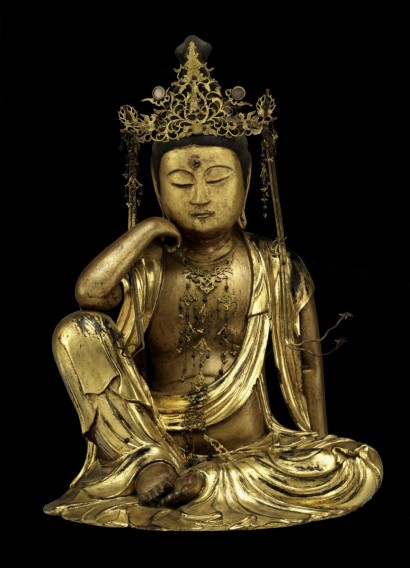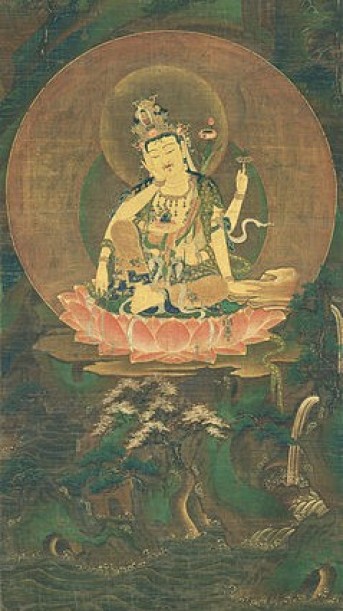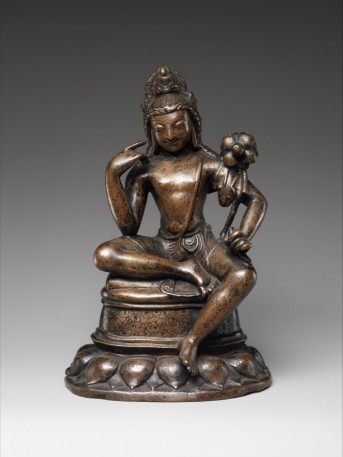Japan, Edo period, ca. 1693; wood with gold, gold leaf, lacquer, and crystal inlay; 16 9/16 x 12 1/8 x 10 1/4 in.; The Metropolitan Museum of Art, Rogers Fund 1956, 56.39, photo © The Metropolitan Museum of Art; source: Art Resource, NY.
Nyoirin is an esoteric form of Kannon whose name means Jewel-holding Wheel-turning Lord of the World. This Japanese form of the bodhisattva usually has six arms, instead of the two seen here. Carved of wood, and then lacquered and gilded, this beguiling figure sits in a posture of royal ease. Nyoirin rests on a small pedestal meant to suggest Kannon’s Pure Land, known in Japanese as Fudarakusan. One hand touches his cheek, indicating reflection. Interestingly, this two-armed form of Nyoirin is not holding a jewel or wheel, the attributes that give this bodhisattva his name. Japanese women may have supplicated the two-armed form of the deity to ensure the health and safe delivery of children.







